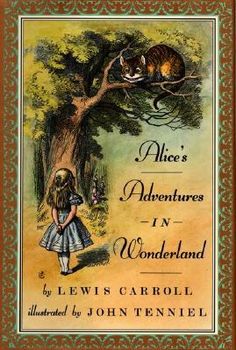The Victorian era witnessed the rise of animal protection, zoos, pet keeping, natural history, cattle and sheep breeding, vegetarianism, antivivisection, and dog and cat shows. But it also beheld big game hunting, blood sports, animal abuse, a burgeoning fashion industry that threatened animal populations, and widespread fears of our animal ancestry, sparked by Darwinian evolution. Animal artists drew exotic specimens and animals of all species observed from life and on location. In addition, artists and authors humanized animals or dressed them in Victorian clothes to point out social vices as well as rampant inequalities across the social classes in regard to wealth, education, and quality of life in general. Students in the "Victorian Illustrated Book" class at Skidmore College selected items to add to this chronology to set our gallery exhibit, "A Victorian Menagerie," in a cultural context.
The Victorian Illustrated Book, Spring 2020 Dashboard
Description


This course explores the Victorian illustrated book as it came into being, flourished, and evolved during the long nineteenth century. This writing-intensive Honors Forum course examines how a genre designed for adults found a home in children’s literature at the end of the nineteenth century and gains new expression in our time through the graphic classics, a prescient form of material culture. Students will learn how to evaluate and interpret an illustrated text by “reading” illustrations to decipher meaning, engaging in creative practice to become author-illustrators, and mounting an exhibition of Victorian illustrated books. With the move to online learning at Skidmore College, we will now create our exhibition on the Victorian era and book illustration by joining this group on COVE. Together we will build the exhibition through COVE's Gallery Builder. Welcome to our group. And let the fun begin!
Galleries, Timelines, and Maps
The Victorian era witnessed the rise of animal protection, zoos, pet keeping, natural history, cattle and sheep breeding, vegetarianism, antivivisection, and dog and cat shows. But it also beheld big game hunting, blood sports, animal abuse, a burgeoning fashion industry that threatened animal populations, and widespread fears of our animal ancestry, sparked by Darwinian evolution. Animal artists drew exotic specimens and animals of all species observed from life and on location. In addition, artists and authors humanized animals or dressed them in Victorian clothes to point out social vices as well as rampant inequalities across the social classes in regard to wealth, education, and quality of life in general.
This exhibition, based in part on the digitized Norman M. Fox Collection at Skidmore College, illustrates the ways the Victorians treat animals, anthropomorphize animals, put animals on display, and make animals an indelible part of... more
https://academics.skidmore.edu/blogs/fox-adler/files/2018/02/Final-Victorian-Booklet.pdf
Together we will be creating an exhibit on some aspect of Victorian literature and culture. To help us get started, I have attached a link to an exhibition booklet my class created in Spring 2017 on the topic of "'In the Know,' Victorian Style." In this exhibit, we explored these questions. What does it mean to point to your nose with your right index finger? The Victorians would immediately understand the meaning of this gesture that appears in George Cruikshank’s “A Chapter of Noses” from My Sketch Book (1834) and “The Jew and Morris Bolter Begin to Understand Each Other” for Charles Dickens’s Oliver Twist (1838). Pointing to your nose was a way to signal to another that...
moreThis map helps us to return to Victorian England and to begin to think like a Victorian. The map features Hyde Park, which housed the Great Exhibition of 1851, the first ever world's fair. There wasa large glass structure, dubbed The Crystal Palace by Punch, and it held wonders from all around the world. This account of a visit to the Great Exhibition comes from Charlotte Bronte (1816-55), beloved author of Jane Eyre, who is pictured here in a painting by George Richmond dating to 1850.
A visit to the Crystal Palace, 1851
 "Yesterday I went for the second time to the Crystal Palace. We remained in it about three hours, and I must say I was more struck with it on this occasion than...
"Yesterday I went for the second time to the Crystal Palace. We remained in it about three hours, and I must say I was more struck with it on this occasion than...
